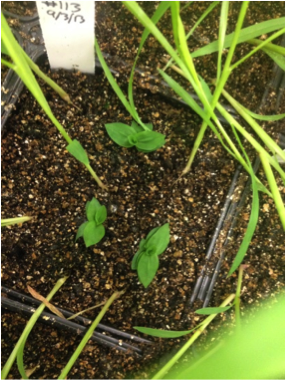At the Enterprise Rent A Car Institute for Renewable Fuels, scientists have over 3,000 different Setaria viridis mutant families. Taking careful observations of this many families is a lot of work! This is why scientists need students to help observe mutant phenotypes. Here is a report of one example of a mutant phenotype that has been identified, and is currently undergoing further research.

The mutant family TB.Sv.NMU.00256 appears to be dwarf and flowers late relative to the wild type, Setaria viridis A10.1 under white light, as well as under simulated shade/supplemental far-red light (sFR).
The application of nitrogen fertilization is essential to increase grain yield, but it also promotes leaf and stem elongation, resulting in an overall increase in plant height. Uncontrolled increases in plant height can cause lodging, when tall plants in fields fall flat on the ground, which decreases yield and makes harvesting more difficult. During the green revolution, a period of agricultural advances that led to higher yields in crops, the genetic screens to identify dwarf mutants contributed to the development of high-yielding semi-dwarf varieties of wheat and rice. The reduction in plant height in semi-dwarf varieties led to an improved harvest index (grain: straw ratio) and enhanced biomass production.
Our objective is to control plant height at increased planting densities while increasing the net biomass per plant. Since Setaria viridis is closely related to emerging C4 bioenergy grasses (i.e. Miscanthus and Panicum), this dwarf phenotype will help us characterize the genes and dissect the genetic network that can be engineered to increase biomass at high planting densities. The higher the biomass harvested per plant, the more biofuel can be produced.
Contributed by Sankalpi Warnasooriya, PhD
Adapted from Sakamoto, T., and Matsuoka, M. (2004). Generating high-yielding varieties by genetic manipulation of plant architecture. Current Opinion in Biotechnology 15, 144-147.